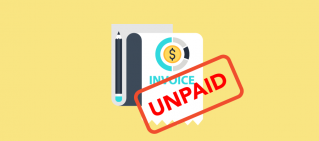What To Do When A Client Doesn’t Pay
In a perfect world, all of your clients would pay you on time, which, in result, would help you manage your cash flow more effectively. That’s not always the case, though. Not every client will pay you on time - that’s the harsh truth of it. What steps should you take when an invoice remains late and unpaid?

Send a polite reminder
A friendly email reminder is the first step to dealing with a client that won’t pay. Sometimes you won’t have to take things further than this - this email will be enough for them to 1) respond, and 2) pay you. Life can be crazy, these things can happen.
Reach out via phone call
After 24 - 48 hours of no reply to your email reminder, you can now call them. This will likely be an awkward conversation, but it’s best to be polite. This will act as a second reminder - one that is harder to be ignored.
Be willing to make a compromise
If you’ve emailed and called, it’s time to talk with your client on making a deal. Getting at least some of your money now is the goal at this point. You’re a business: you rely on your clients’ payments to survive, it’s that simple. Find out what the issue is and why your client isn’t paying. If it’s financial issues, offer a payment plan over a period of time. If your client won’t pay because they aren’t satisfied, offer a discount or additional services.
Consult an attorney
If you’ve taken all the necessary steps to be paid by your client and they just won’t cooperate, consult an attorney. You’ve given them plenty of chances to pay the invoice, now it’s time to get the law involved.
Some ways you can make it easier for clients to pay on time: send clear invoices, accept multiple payment methods, run background or credit checks on people/companies you do business with, and use a streamlined automated invoice system for added convenience.
.png?token=6adcf38ed58846e4f05e97718ba6eb6d)